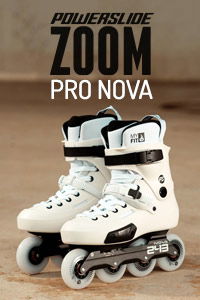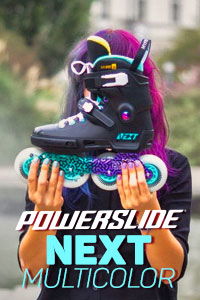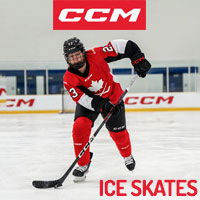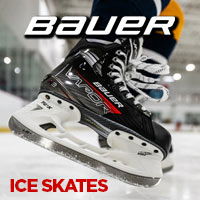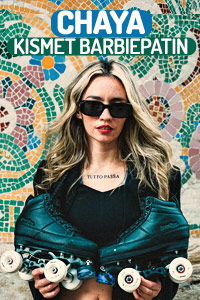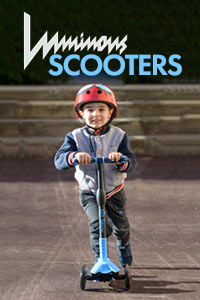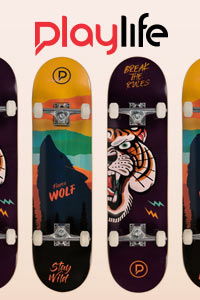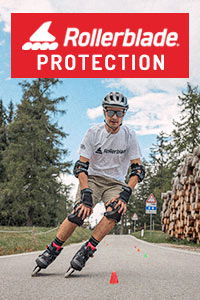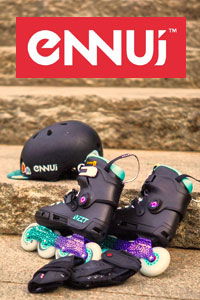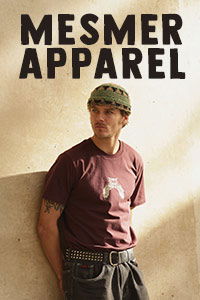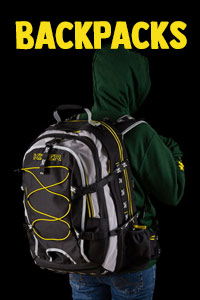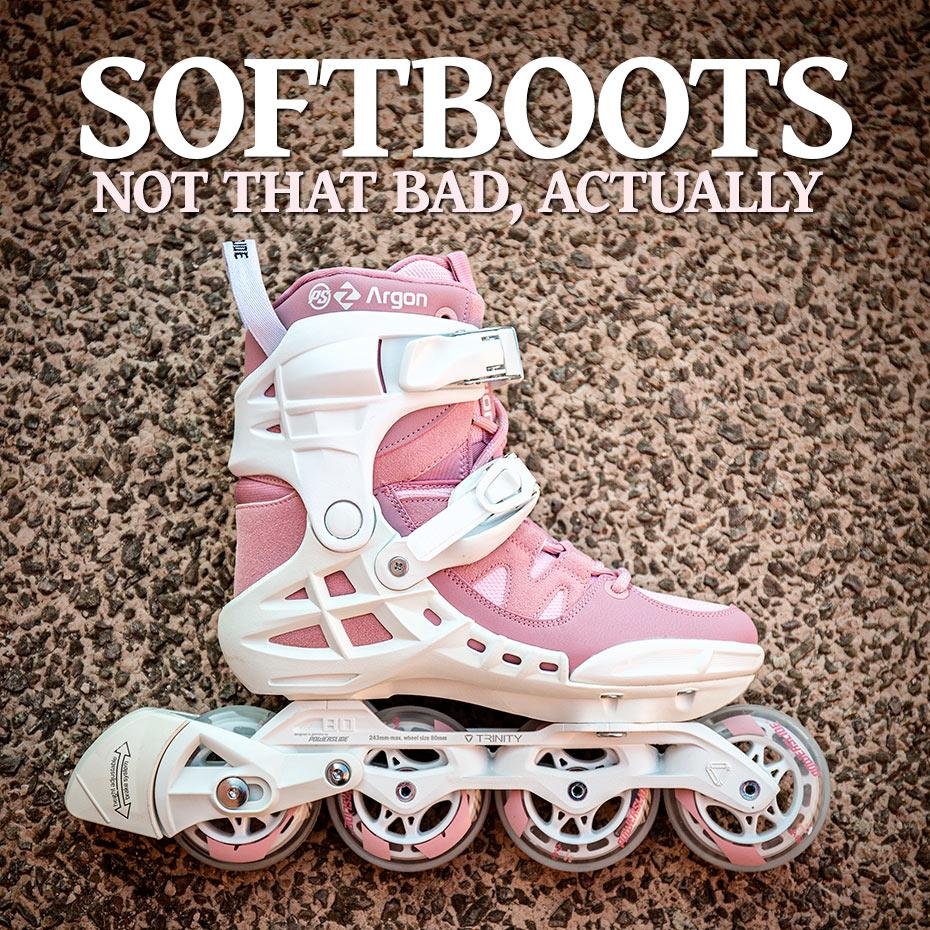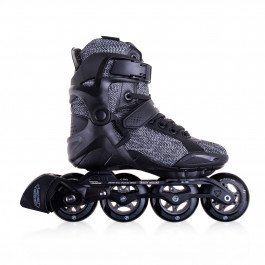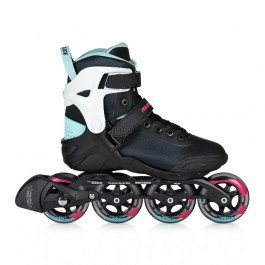I’ve planned to write this piece for quite some time now. Reason? A widespread negative stance towards idea of softboot skates, which is prevalent among inline skating enthusiasts.
This is visible on discussion boards, groups and in many cases (sadly!) even in attitude of inline skating instructors. It is easy to find opinions questioning the viability of softboot rec and fitness skates as sport’s equipment and people are quick to jump into a conclusion that they are essentially worthless or at least poor fit for the job.
I won’t hide the fact that all of this is annoying me, considering that I am obsessed with skating gear and technology behind it. How it came to be, what is the background, purpose. So I started writing, because some things must be clarified, for the truth’s sake.
Disclaimer: this article is taking only softboots made and sold by brands such as K2, Powerslide, Rollerblade and few other important companies into account. Please do not extrapolate these thoughts onto all skates, made by any brand. Especially those generic skates made in China, which you can order by bulk on Alibaba.
What is the purpose of a softboot skate?
In my opinion, majority of people who badmouth rec/fitness skates makes one, but major, logical error: “If these skates are not meeting my own requirements, then by extension, they are objectively bad”.
Why people jump into such conclusion? Honestly, I do not know. I do know, however, that it is simply unfair approach, which does not do skating, as a whole, any favours.
Softboot skates are made with certain prerequisites in mind. To put it simply, they target a specified audience – people who think about skating in a very much different way than hardcore enthusiasts or those who aim to become them. The most important thing for a softboot skate is to meet the following criteria:
Must be lightweight, comfortable and allow for a good airflow/moisture extraction to keep feet cool.
Must be easy and fast to put on and off.
Should not have too many complex parts requiring maintenance by user.
Should be suitable for recreational or (in case of more advanced and expensive models) for intense fitness workouts or long distance skating. This comes first, every other possible application is just an added bonus.
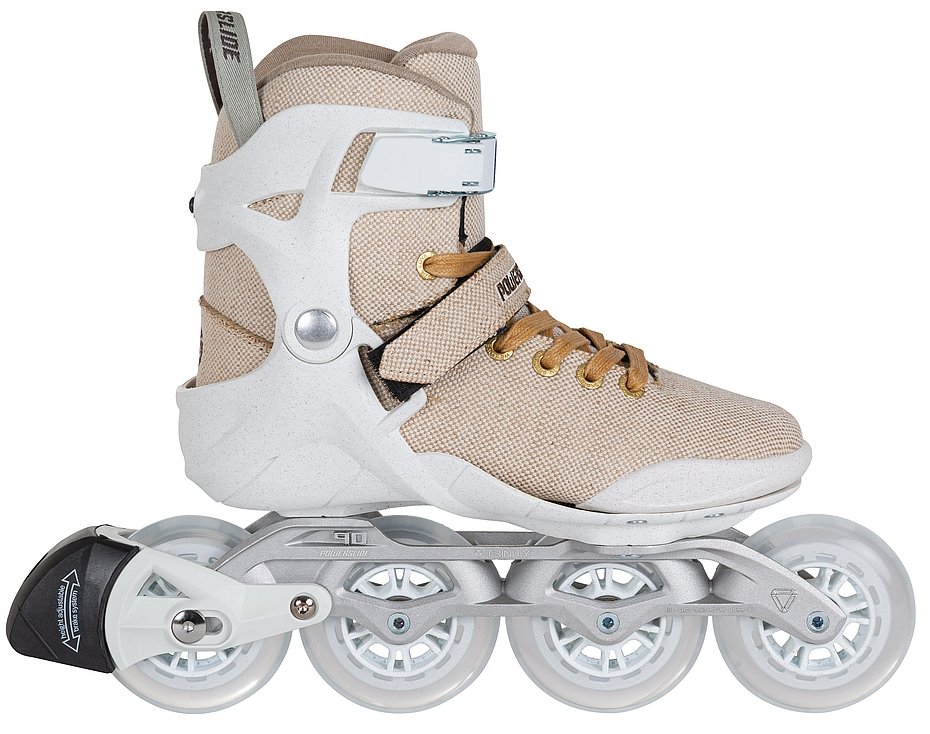
Good quality softboots will easily meet all of these. Designers do not bother with making such skates suitable for jumps, stair rides, slides and who knows what else. Why should they?
As a person interested in industrial design and valuing a good level of rational thinking behind a product, I can appreciate smart solutions implemented in fitness skates. The ways to streamline them (and production process) and make hassle-free for the user as well as cost-efficient can be as much impressive as advanced features in freeskates or aggressive models.
For example, from my point of view, Rollerblade are doing an amazing job in recent years – they have not only invested in making a coherent visual identity (K2 is another company which does well on that front), their Macroblade fitness skates have some jaw-dropping design, are highly performant and of high quality. The same applies to junior Microblade models.
The idea behind softboots is simple – they are made for skating forward, slower or faster, depending on wheel size and how robust the boot is. They are focused on user who wants to put the skates on and have fun from the simple act of rolling around.
I understand the joy of simply rolling around for fun. Focus on the road ahead, soak up the views, enjoy the ride and count lost calories (if you are into that). It is not only an exercise, but an efficient way to clear your head. You do not need to fork out a big amount of cash on skates to get ones allowing you to do just that.
Furthermore, a lot of characteristics found in fitness models make more sense when viewed through this lens. Take long frames as example. Freeskates tend to have frames as short as possible for given wheel size, but in fitness skates the lengths are more arbitrary. This is because long frames give better stability, superior base for push and make skates easier to control at high speeds. They are not made to perform tricks between the cones and that’s fine. Gear should be evaluated in accordance to its intended purpose.
On a side note – a lot of advanced skaters tend to forget that a feeling freedom, granted by gliding on concrete/asphalt with wheels under one’s feet, is what attracts the people into the sport in the first place. Quite often, it is a starting point to pursue a proficiency in a more sophisticated style of skating. But most often, it is not. People simply stick with rolling around and are happy with it.
Using a metaphor: do not write-off a family sedan as a bad car because it is not fit for an off-road racing competition.
Recommending hardboots to everyone is a mistake!
Now is the time for some anecdotal evidence. About a decade ago, I was in a relationship with a girl who wanted to get into my hobby – obviously, skating. She bought herself a pair of cheap, rec K2 softboots. She was finding them comfortable and was a model example of someone who needs skates for just rolling around on park lanes. Skates were fine – no problems with bent ankles whatsoever and 76 mm, soft wheels made them easy to control.
Unfortunately (for her) later on, she wanted to get herself a pair of freeskates. Why? I was using these and almost all people we’ve knew from local skating community did, too. I got her a fresh pair of Fusion 84 LE for birthday. She has quickly sold her K2’s. And it was a huge mistake. I mean, the skates looked good and were even better (just see how cool they look on Greg's feet), but the choice was wrong.
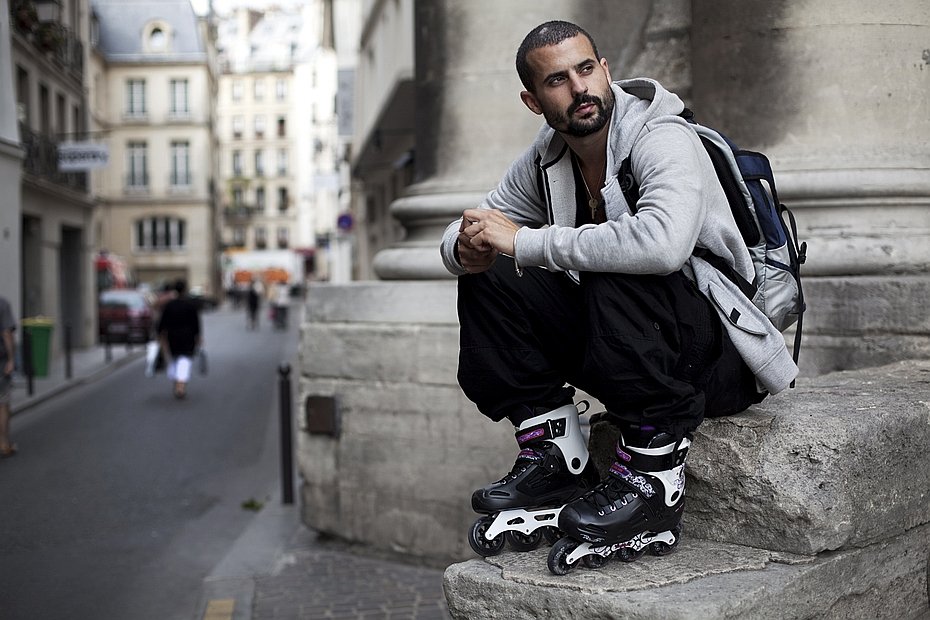
Fusions were simply too tiring for her – even the process of putting them on was a nuisance, seeing that lacing a hard shell and tightening Velcros (no buckles on Fusion 84 LE, just two Velcro straps!) was difficult for a small frame woman, without much strength in her arms. Skates felt heavy and bulky to her, even though they were in a small size and light by hardboot standards.
Furthermore, the break-in period of the liner caused her a lot of discomfort, whereas K2 softboots were comfy right out of the box. Even though in theory, she has now skated a more supportive boot, she wasn’t feeling the same level of feedback from the skate as in case of softboots. This resulted in lower level of confidence, negatively impacting her skating skills.
Were hardboots necessary for her? By all means, no. Not at that point in time, at least. She was not as much into skating as I was. But she bought into the opinion that fitness softboots are an inferior type of skates.
The end result of her “adventure” with freeskates was that she has become disheartened towards skating in general. Maybe it wouldn’t happen if she would not replace these rec K2’s, which brought her so much enjoyment. To put it simply, they were the correct choice for her. Maybe a moment would come for her to replace them with more advanced gear, but she wasn’t ready yet.
You cannot make anyone happy by force.
Of course, one cannot deny the fact that hardboots are more versatile and allow more room for growth of user’s skills. However, we must realise that ...not everyone needs it.
I’m being serious here – many people are fine with not developing their skills beyond few basic braking techniques, crossovers and efficient push to go fast. These basic skills are enough to enjoy skating and it is a fair game to not pursue further development of skills if someone does not want it.
I know that for people who see skating as more than a simple hobby, such approach may seem incomprehensible. But think about it, a bit – all of us do things which bring us joy, but we do so at so shallow level, that no true fan would find it “acceptable”. Few examples:
Not everyone who gets a driver’s license and enjoys riding a car will pursue shaving off seconds from lap times in Nürburgring.
Not everyone who enjoys listening to music is an audiophile with expensive setup and a whole separate room for the purpose of it. A phone, streaming service of choice and a pair of headphones are good enough for most.
Not everyone who enjoys video games buys a gaming PC or a newest console. Millions play games on mobile devices (phones and tablets) and enjoy it.
To make my point even more clear – when you look at the sales data of fitness skates vs any other category, it turns out that this “shallow” version of involvement into skating is good enough for most people out there. There are more casual skaters than die-hard fans. We are outnumbered.
Yes, you’ve read that correctly. Rec and fitness skates are best selling models and with it, come consequences. The face of skating, in general, is the one of people doing laps around local park, with smiles on their faces. Not of those who are devoted to any other, more niche style. No matter how hard the latter wish that opposite would be true.
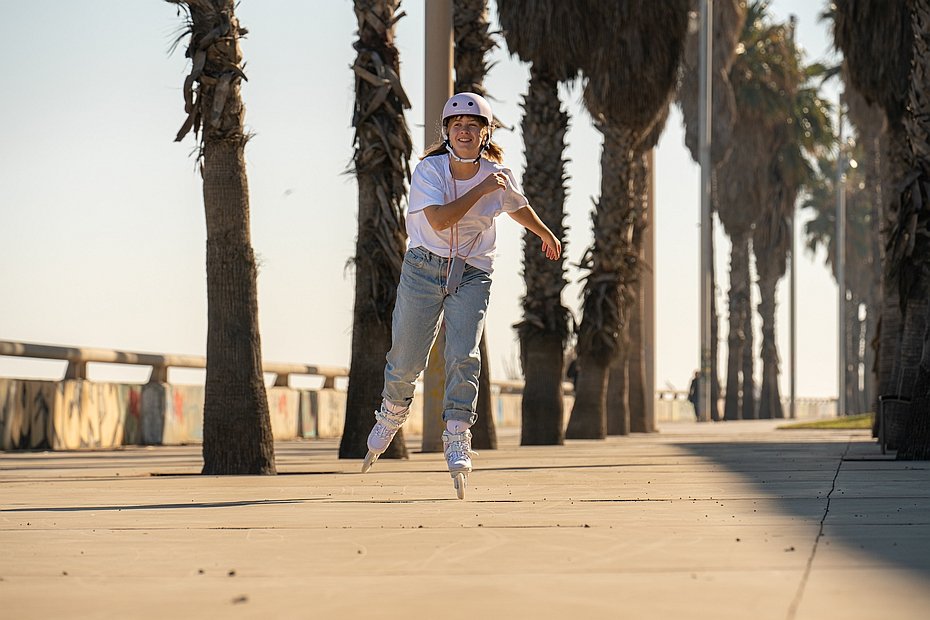
Lack of understanding of this simple truth bothers me especially in case of inline skating instructors. Imagine someone going to classes with skates their just bought in specialised inline skating shop, after talking with the staff, narrowing down their needs, weighting options and buying a properly fitting, good brand model. Then, one of the first things they hear from the instructor is that their skates are trash, because they are softboots. There is a high chance that they will lost their motivation for skating, will never buy anything again at the shop (which did nothing wrong) and will avoid the instructor.
Some instructors even have a rule that they simply won’t teach people who skate on softboots. I truly do not understand why. If a person is just starting, there are plenty of skills to cover and teach them, where softboots are not an issue. This includes even things like skating backwards.
Of course, it is only fair to let people know what kind of limitations their gear of choice imposes on them. To explain that, at some point, they’ll need to get more advanced skates if they want to learn new things safely and efficiently.
The key is that this ambition should be coming from the side of a student - the fact that teacher is obsessed about making his pupils hardcore skaters, no matter if they want it or not, is only his vision. As such, it does not necessarily reflect what they expect.
Of course, there is a high possibility that over time, along with learning new skills, a person will get more involved in skating and will decide that it is a right time to get a more versatile pair of skates. But trying to force this onto someone right at the start is not a way to go and can only serve as a discouragement.
Yes, people make mistakes when they buy skates
This applies to every type of a skate out there. The consequences are well-documented:
If a beginner will overestimate their skills and get a skate with wheels way too big for them to handle, they will struggle, no matter if it is a softboot or a hardboot.
If skates are too big, which happens a lot when people buy them in retail chain stores (boils down to seller’s lack of knowledge), no matter what type of a boot it is, the foot will move inside. This will cause a lot of problems while skating, of course.
If the boot is not properly buckled and laced, the heel will lift and skates will bend to the sides in uncontrollable way. As a skating geek, I am feeling like dying inside a little, bit by bit, every time when I see people who do not pay attention to lacing and rely on buckles alone. Do not get me started on people who skate without laces at all – I consider this to be as blasphemous as putting a pineapple on a pizza is for Italians. The lacing plays huge part in how boot does fit – it holds the foot in place, wraps the boot around it and prevent unwanted movement. If a skate does have high, hockey-style lacing, this also greatly contributes to preventing heel lift.
If the frame placement in relation to user’s foot is suboptimal for them, this will create an issue of ankles leaning inwards or outwards. In softboots, this results in visibly bent skates. In hardboots, this results in cuff digging into leg, shell putting a lot of pressure on the ankle, causing pain and even damage the skin. Hardboots usually have some sort of frame adjustment to the sides – but softboots most often do not. In such case, one simply needs to choose a different skate with fixed frame position, which will be better suited for themselves, or look for a model which allows adjustment.
Softboots do vary in shape, just like other skates do. There are slimmer models next to more massive and wide ones. A good example of the second category are Phuzion Argon series skates – their boot is great, to put it simply. In our shops it is extremely rare to see a customer not being happy with the purchase. It is comfortable, holds the foot well in place, provides a decent amount of ankle support. In addition, it comes with Trinity mounting with all benefits of it. Still, if it does not fit the foot – you won’t help it and need to seek for another skate.
The bad rep of softboots does have a lot to do with the fact people are quite often buying them without any professional advice. For example, the myth about getting a size bigger skate to leave room for a thick sock is still alive and well.
Comfort comes first.
It is true – the main thing attracting people to softboots and one which caused a major shift in skate design, after K2 introduced the concept, is level of comfort they provide. If someone places this high on their list of priorities, there is absolutely no reason to sacrifice it, if they do not really care about learning tricks on skates.
The comfort does not boil down to the breathability, lightness and with a generous fit. How easy and fast it is to put skates on also takes the part.
I like my skates. I have four pairs now: three hardboots plus odd Kaze-turned-marathon-skate setup. In the past season, I was not skating as much as I would like to, mostly because of health reasons. Still, I used all of them often as means of getting around my neighbourhood, to pick up groceries, bread from bakery, some fruits, or to drop something at my dad’s place, as he lives only 2 km away.
Let me tell you – tight-fitting skates, modded, customised, with heat-moulded, laced liners and waxed hockey laces are great when I plan a longer skating session. But when I want to go out and grab a bag of potatoes to make a dinner, from a booth located 400 m away (yes, I hate wasting time walking), putting them on is tiring, inconvenient and takes way too much time.
I miss having a pair of skates which would take only a moment to put on, like my sneakers do. I was even on a verge of pulling a trigger on K2 Trio, but they are still not available. Then, we all know what happened by the end of February – not a great time to spend money on a fifth pair of skates I’ll use only for shopping in my area. These can wait, but I basically made up my mind. I’m getting some softboots, sooner or later. These Trios do look good.
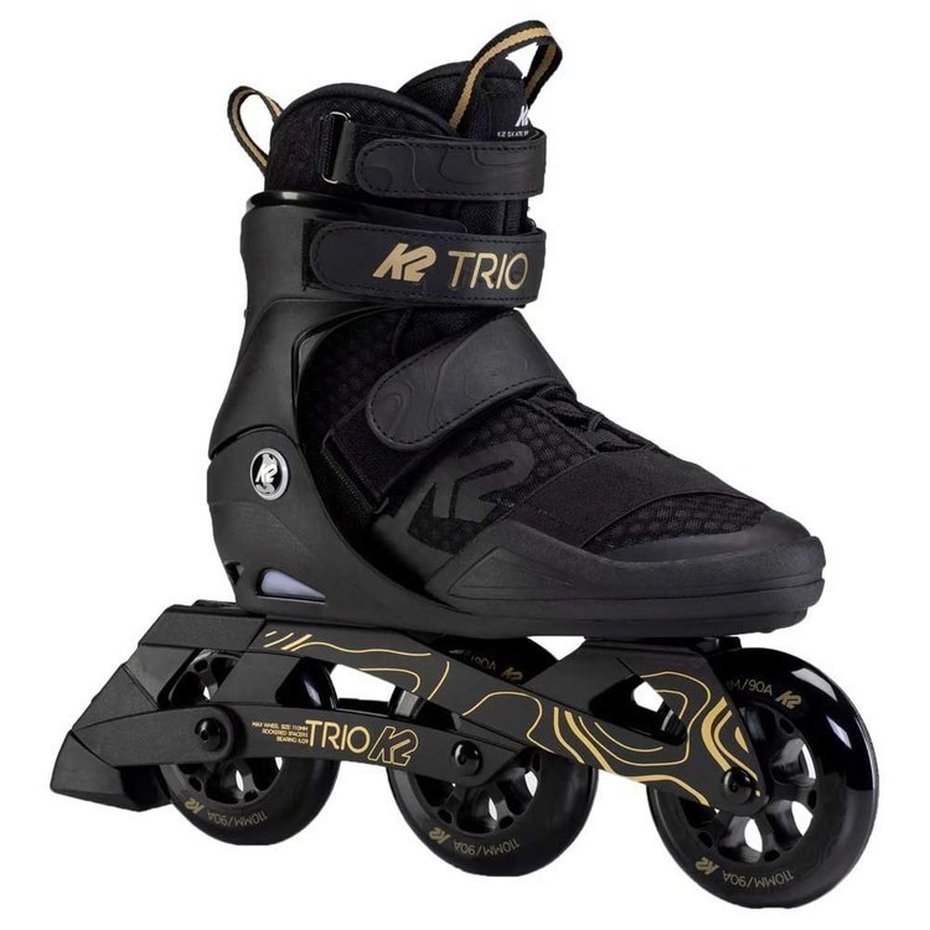
Measure strengths against intentions!
This phrase sums it up perfectly. If you want to skate fitness – a good pair of softboots will do nicely. Want to do anything more on skates? Go for different type of a boot. It is really as simple as that.
The narrow scope of applications doesn’t make something useless.
Modern softboots, made by trusted brands, are really good designs suitable for having fun skating in them. Thousands of people do.


